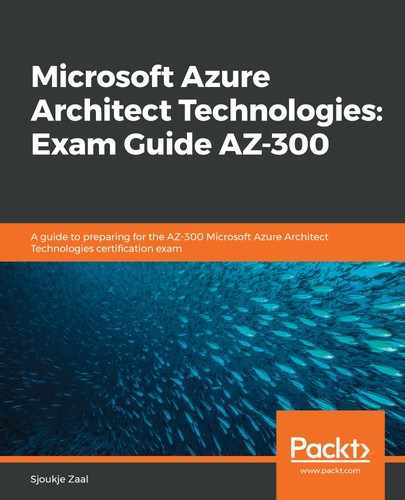Azure AD offers a directory and identity management solution from the cloud. It offers traditional username and password identity management, as well as roles and permissions management. On top of that, it offers more enterprise-grade solutions, such as Multi-Factor Authentication (MFA) and application monitoring, solution monitoring, and alerting. Azure AD can easily be integrated with your on-premises Active Directory to create a hybrid infrastructure.
Azure AD offers the following pricing plans:
- Free: This offers the most basic features, such as support for up to 500,000 objects, single sign-on (SSO), Azure B2B for external users, support for Azure AD Connect synchronization, self-service password change, groups, and standard security reports.
- Basic: This offers no object limit, has an SLA of 99.9%, a self-service password reset, company branding features, and support for the application proxy.
- Premium P1: This offers advanced reporting, MFA, conditional access, MDM auto-enrollment, cloud app discovery, and Azure AD Connect Health.
- Premium P2: This offers identity protection and privileged identity management.
For a detailed overview of the different pricing plans and all the features that are offered for each plan, you can refer to the following pricing page: https://azure.microsoft.com/en-us/pricing/details/active-directory/.
Note that Azure AD Premium is part of the enterprise mobility and security suite.
In the next section, we are going to create and manage users and groups inside an Azure AD tenant.
